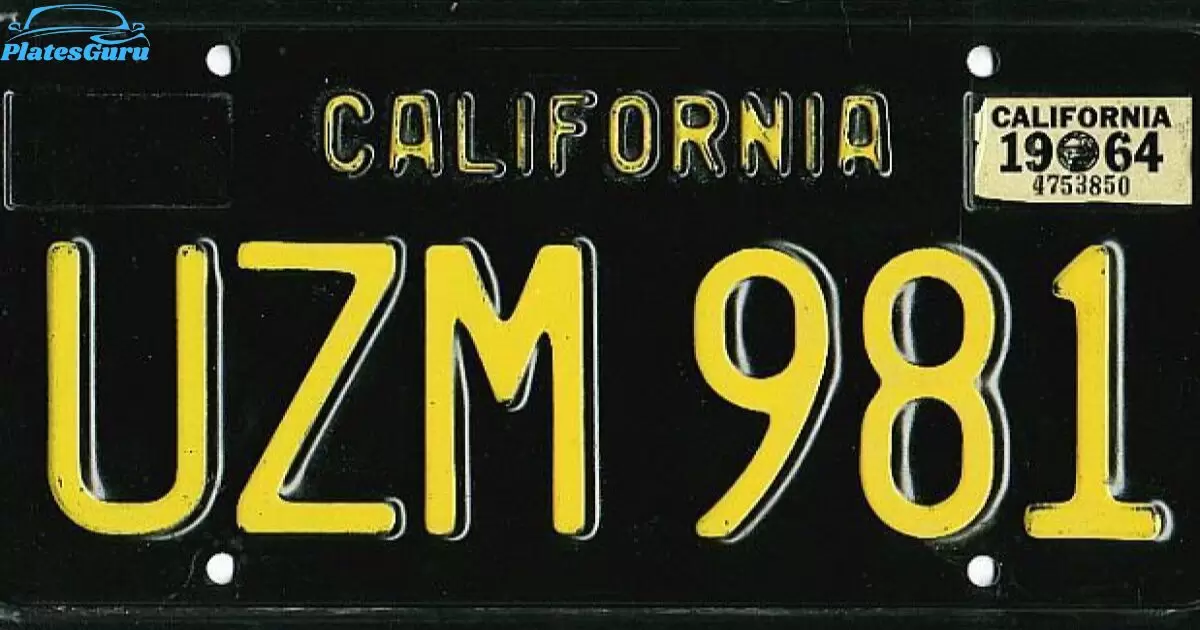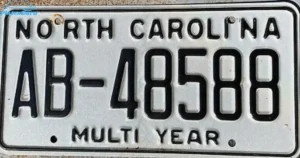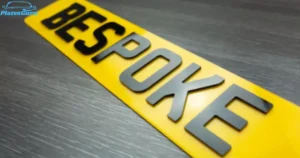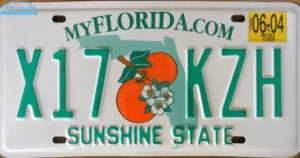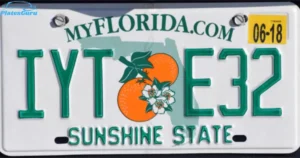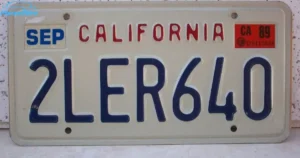Sleek black California license plates offer a touch of vintage charm and distinction to your vehicle. While original issues are a thing of the past, you can still legally acquire vintage-inspired or custom black plates in California by navigating the DMV’s process or exploring options from third-party vendors. Elevate your car’s mystique and retro appeal with these striking black plates, accessible through specialty outlets or by undertaking a bit of effort for personal customization.
When Did California Have Black License Plates?
California has a history of various license plate designs and colors, including black license plates. The most iconic black license plates, often referred to as “black plates,” were originally issued by the state from 1963 to 1969. These plates featured yellow lettering on a black background.
Recognizing these plates’ nostalgic and historical value, California reintroduced the black license plate design as part of the California Legacy License Plate Program. This program, which began in 2013, allows motorists to order legacy plates replicating the design of plates from California’s past, including the 1960s black plate design.
The program was initiated after enough interest (pre-orders) was demonstrated by California residents, and it aimed to bring back the classic look of these vintage license plates for use on modern vehicles.
When Did California Stop Using Black License Plates?
California stopped issuing the original black license plates with yellow lettering in 1969. Starting from 1970, the state transitioned to a blue license plate with yellow lettering, marking the end of the era for black plates as standard issue. However, the black plates have come back through the California Legacy License Plate Program, allowing car enthusiasts and others to order these retro-style plates for their vehicles.
What Do Black California License Plates Mean?
Black California license plates, especially those with yellow lettering, are part of the California Legacy License Plate Program. This program allows motorists to use license plates on their vehicles that replicate the designs from California’s past. The black plates with yellow lettering specifically replicate the design that was originally issued from 1963 to 1969. Here’s what they signify:
- Nostalgia and Heritage: These plates are a nod to California’s automotive history and culture, evoking a sense of nostalgia for the 1960s era. They’re popular among classic car enthusiasts and those who appreciate the aesthetic of that time period.
- Personalization and Style: Opting for a black license plate is a way for vehicle owners to personalize their car’s appearance. The retro design stands out against modern vehicle designs and can complement the vehicle’s overall look.
- Collector’s Item: For some, these plates are collectible items that add to the authenticity and value of restored or preserved classic cars from the era when these plates were originally issued.
- Status: The ability to obtain these plates is often seen as a status symbol, indicating a special interest in California’s car culture and history. It’s also a way for newer vehicles to carry a piece of the state’s rich automotive heritage.
Can You Still Get Black And Yellow California License Plates?
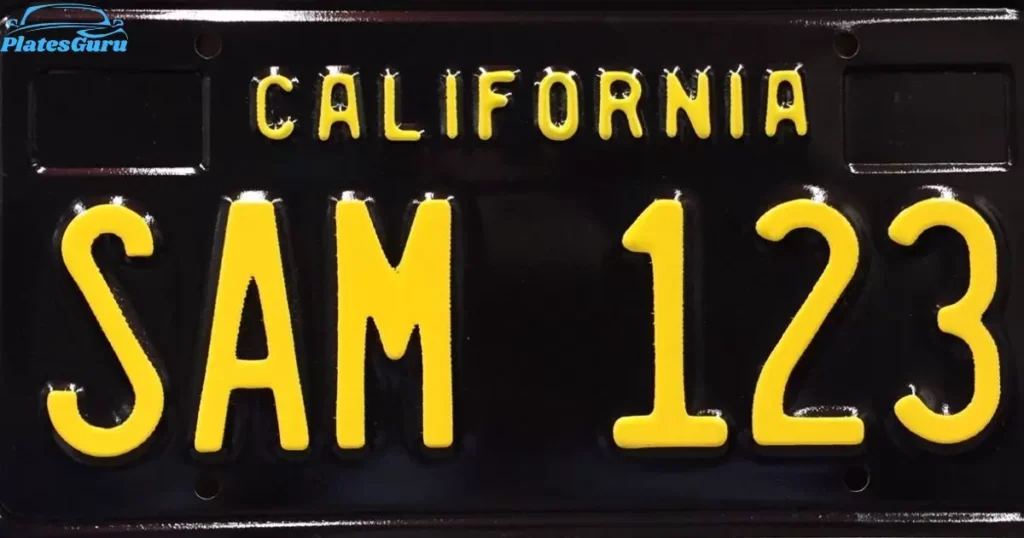
You can still get black and yellow California license plates through the California Legacy License Plate Program. This program allows California residents to order specialty license plates that replicate the design of historical plates, including the black plates with yellow lettering that were originally issued in the 1960s.
To obtain these plates, you would need to apply through the California Department of Motor Vehicles (DMV). There are specific fees associated with ordering these legacy plates, and part of the proceeds from the program goes towards supporting state programs. The application process can typically be done online or by mail, and it requires filling out a special interest license plate application form available on the DMV’s website.
Can You Get Black California License Plates At Aaa?
Yes, AAA members in California can often handle DMV services at AAA offices, including ordering specialty license plates such as the black California Legacy License Plates. However, availability of services can vary by location, so it’s advisable to check with your local AAA office for specific details on ordering these plates. AAA provides a convenient alternative to visiting a DMV office, offering a range of vehicle registration and licensing services to its members.
How Much Do Black California Plates Cost?
The cost for the black California Legacy License Plates is $50. This applies to both non-personalized and personalized plates. The fee is part of the California Legacy License Plate Program, which allows vehicle owners to order plates that replicate the design of historical plates from the state, including the iconic 1960s black plates with yellow lettering.
Do You Pay Extra For Black California Plates?
Yes, you do pay extra for black California plates under the California Legacy License Plate Program. The initial cost for ordering these specialty plates, including the iconic black plates with yellow lettering, is $50. This fee is in addition to the regular vehicle registration fees. If you opt for a personalized version of the legacy plate, there may be additional costs for personalization. This program allows vehicle owners to obtain plates with a classic look, and the fees contribute to the administrative costs of producing and managing these specialty plates.
What States Have Black License Plates?
Several states in the U.S. offer black license plates, either as part of a special program or as a standard option. These plates are often sought after for their distinctive look or for historical reasons. Here’s a brief overview of some states known to offer black license plates:
- California: Offers black license plates with yellow lettering through the California Legacy License Plate Program, replicating the design from the 1960s.
- Delaware: Has a long-standing tradition of black and white license plates, considered a status symbol, especially the low-digit plates.
- Connecticut: Offers a classic vehicle plate that is black with white lettering for vehicles 20 years old or older that are used for antique, classic, or exhibition purposes.
- New York: Had a black and yellow license plate design as part of a vintage series, reminiscent of the state’s plates from the 1960s.
- Alabama: Offers a vintage vehicle tag that is black with white letters for vehicles 30 years old or older.
- Nevada: Provides a “Classic Vehicle” plate that is black with white or yellow lettering for vehicles over 25 years old.
Are Black And White Plates Legal In California?
Yes, black and white license plates are legal in California. These plates are part of the California Legacy License Plate Program, which offers a series of retro plates including the black plates with yellow lettering from the 1960s and the black and white plates reminiscent of older California plate designs. They’re fully approved by the California DMV for road use.
Why Do Some Cars In California Have Black License Plates?
Some cars in California have black license plates because they have opted into the California Legacy License Plate Program, which offers specialty plates that replicate the look of historical plates. The black plates with yellow lettering specifically replicate the design from the 1960s. These plates are popular for several reasons:
- Nostalgia and Heritage: They evoke a sense of history and nostalgia, appealing to car enthusiasts and those who appreciate the aesthetic of California’s automotive past.
- Aesthetic Appeal: The black and yellow design stands out and can complement the look of both classic and modern vehicles.
- Personalization: Choosing a legacy plate allows vehicle owners to personalize their vehicle’s appearance in a unique way that reflects their interest in California’s car culture and history.
Why Do People Have Black License Plates?
People choose black license plates for various reasons, including aesthetic appeal, nostalgia, and personalization. Black plates, especially those from legacy or vintage programs like California’s, evoke a classic and timeless look that can enhance the appearance of both modern and vintage vehicles. They signify an appreciation for automotive history and can also serve as a statement of individual style. Additionally, in some regions, black license plates are part of a special series that may offer benefits or recognition within the car enthusiast community.
Can I Paint My License Plate Black In California?
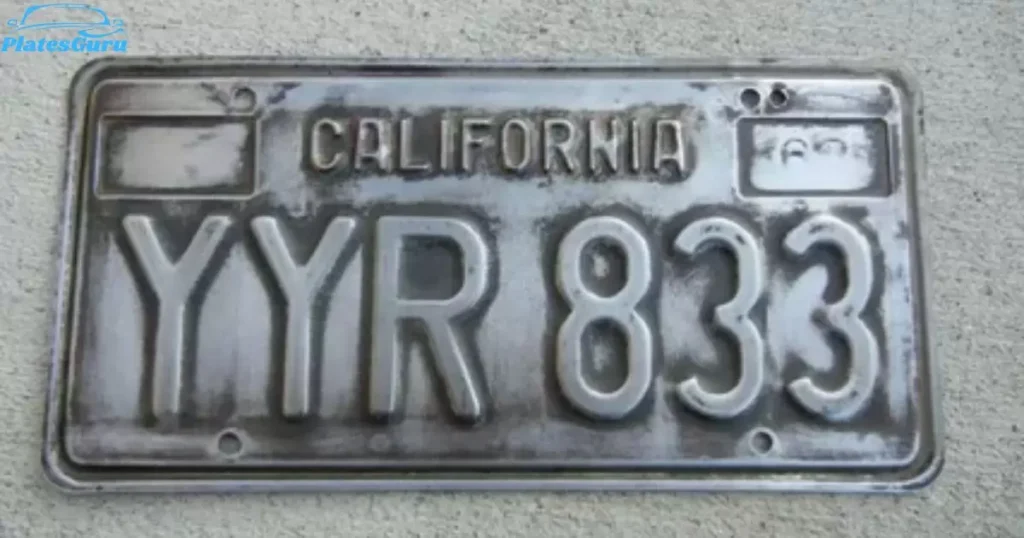
No, you cannot legally paint your license plate black in California or alter it in any way. License plates are issued by the California Department of Motor Vehicles (DMV) and must be kept in their original state. Altering a license plate not only violates California vehicle codes but can also lead to fines, penalties, and potential legal issues.
If you’re interested in having a black license plate, California offers a legal way to obtain one through the California Legacy License Plate Program, which includes the option for black plates with yellow lettering, replicating the look from the 1960s.
Can I Change The Color Of My License Plate In California?
In California, you cannot legally change the color of your license plate. License plates are issued by the California Department of Motor Vehicles (DMV) and must be displayed as they were originally issued. Altering the color or appearance of a license plate in any way is against California law and can result in fines, penalties, and other legal issues.
If you wish to have a different style or color of license plate, you must choose from the options provided by the DMV, such as the California Legacy License Plate Program, which offers plates in various styles and colors that are legally recognized and approved for use.
Do Teslas Need A Front License Plate In California?
Yes, Teslas, like all other vehicles in California, are required to have a front license plate displayed in addition to the rear plate. California law mandates that most vehicles registered in the state must have two license plates, one attached to the front of the vehicle and the other to the rear.
The requirement applies to passenger vehicles, commercial vehicles, and most other types of vehicles. Failure to display the front license plate can result in a fine. There are specific brackets and methods for attaching the front plate to Teslas and other vehicles without causing damage or significantly altering the vehicle’s aesthetics.
Do You Get 2 License Plates In California?
Yes, in California, when you register most types of vehicles, you are issued two license plates by the California Department of Motor Vehicles (DMV). One plate is for the front of the vehicle, and the other is for the rear. The law requires both plates to be securely fastened and clearly visible.
This applies to passenger vehicles, commercial vehicles, and motorcycles (although motorcycles are only issued one plate for the rear). The requirement for two plates helps in the identification of vehicles for law enforcement, toll collection, and security purposes.
Why Is 69 Banned In California License Plates?
In California, the DMV has restrictions on personalized license plate configurations that may be considered offensive, misleading, or inappropriate. The number “69” is banned in certain contexts on personalized license plates due to its sexual connotation, except when it is used in a context that clearly relates to the vehicle’s model year or is part of a classic car’s historical plate that reflects the vehicle’s age, for example, a vehicle that was originally manufactured in 1969. The California DMV reviews personalized license plate applications to ensure they adhere to guidelines that prevent the issuance of plates with messages that could be considered offensive or in poor taste.
How Do I Change My Car From Commercial To Private In California?
To change your car from commercial to private registration in California, you typically need to follow a specific process as outlined by the California Department of Motor Vehicles (DMV). While I encountered an issue accessing detailed information directly, the general steps often include:
- Visit the DMV: You may need to visit a DMV office in person for this type of transaction.
- Complete Appropriate Forms: Fill out the necessary forms to request a change of classification. This might include a Statement of Facts (REG 256) form where you can indicate the change from commercial to auto or private use.
- Provide Documentation: You might be required to provide documentation proving the vehicle is used for private purposes and not commercial activities. This could include insurance documentation.
- Pay Applicable Fees: There are fees associated with changing the registration classification from commercial to private. These fees can vary based on the vehicle and the specific details of the change.
- Surrender Commercial Plates: If applicable, you might need to surrender your commercial license plates and receive new plates for private use.
See more post: What Is A QQ License Plate?
How To Renew California License Plate?
Renewing a California license plate involves renewing your vehicle registration, as the plate is tied to the registration status of your vehicle. Here’s how you can renew your vehicle registration in California:
Online
Visit the DMV Website: Go to the California Department of Motor Vehicles (DMV) website and navigate to the vehicle registration renewal section.
Enter Information: You will need to enter your vehicle’s license plate number and the last five digits of the Vehicle Identification Number (VIN).
Pay Fees: Pay the renewal fees online using a credit card or other accepted payment methods. The fees will be calculated based on your vehicle’s information.
By Mail
Receive Notice: You’ll receive a renewal notice from the DMV approximately 60 days before your current registration expires. This notice will include the renewal fee and any required emissions testing information.
Complete Form: Complete the form included with your renewal notice.
Mail Payment: Send the completed form along with your payment (check or money order) to the address provided on the renewal notice.
In Person
Visit a DMV Office: If you prefer to renew in person or need to handle other transactions, you can visit a DMV office. It’s recommended to make an appointment to save time.
Bring Documentation: Bring your renewal notice or your current registration card, along with payment for your renewal fees.
Complete Any Required Tests: If your vehicle requires a smog check or other tests, ensure these are completed before attempting to renew in person.
FAQs
How long does it take to get a black license plate in California?
The processing time for a black California Legacy License Plate can vary. While specific timelines are not provided, expect several weeks to a few months for processing and delivery after submission of your application to the DMV.
Can you legally change the color of your license plate in California?
No, you cannot legally change the color of your license plate in California. License plates must remain in their issued state, and altering them in any way, including changing their color, is against the law.
Can I get a blue license plate in California?
California has offered blue license plates in the past as part of its Legacy License Plate Program, which includes vintage designs. The program at times has included blue plates with yellow lettering, reminiscent of the plates issued in the 1970s. However, the availability of specific plate colors like blue can depend on current DMV offerings and demand through the Legacy License Plate Program.
When did California have black license plates?
California originally issued black license plates with yellow lettering from 1963 to 1969. These plates have been reissued through the California Legacy License Plate Program for those interested in the classic design for their vehicles.
Are colored plates legal in California?
Colored plates are legal in California if they are issued by the DMV, including special program plates like the Legacy License Plates which come in specific colors and designs approved by the state. However, altering the color of a DMV-issued plate is not legal.
What state has black and white license plates?
Utah’s black and white license plates became highly popular and available to all Beehive State vehicle owners earlier this year, joining other states like Delaware that offer black and white license plates as part of their vehicle registration options.
Conclusion
The allure of black license plates in California extends beyond their striking appearance, offering a blend of nostalgia, heritage, and personal style. Originally issued between 1963 and 1969, these iconic black plates with yellow lettering have been reintroduced through the California Legacy License Plate Program, allowing modern vehicles to don a classic look. Available for a fee of $50, these plates can be obtained through the DMV or AAA offices, underscoring a deep appreciation for California’s rich automotive culture.
This option caters to enthusiasts and collectors alike, emphasizing a vehicle’s uniqueness while paying homage to a bygone era of automotive design. Additionally, altering or painting license plates is illegal, ensuring that vehicles carry only DMV-approved plates, including those in various colors and styles offered through specific programs.
